This past week, I attended an activity with a local intercultural group: learning to kayak. Now, this group is big into canoe camping and white-water kayaking, but they have to entice us newbies into the sport a little more gently. They partner with Parks Canada to teach the basics in the reasonably safe and very calm Peel Basin and Lachine Canal.
Many years ago, I had the experience of kayaking in the ocean. It was glorious, up to the point where I was returning to the beach, got pulled sideways by a breaking wave, rolled, and emerged sans glasses. Thus, when I joined in this kayaking class, I left many things safe on shore: wallet, camera, and glasses. So you’re not going to see any pictures I took out on the water.
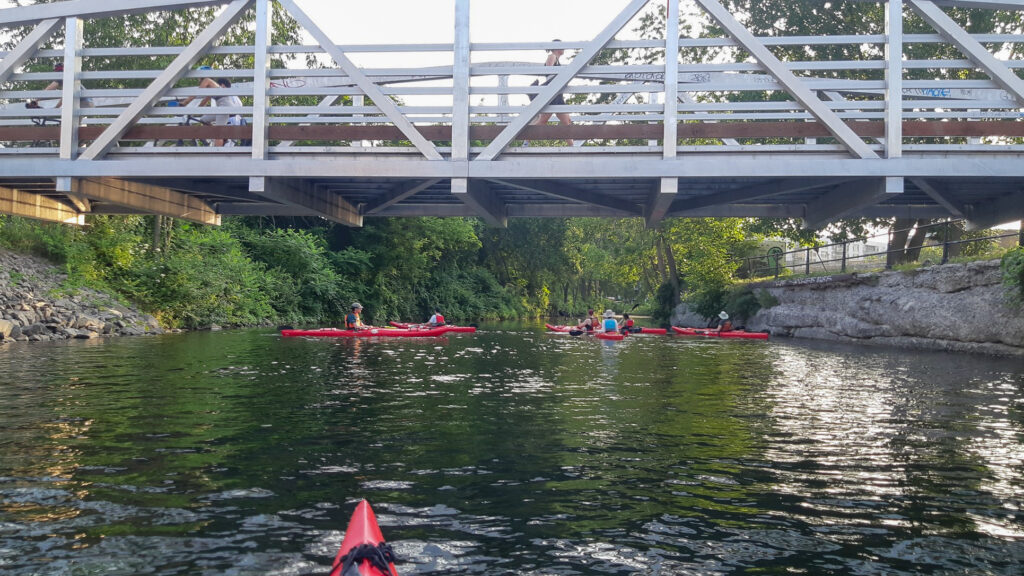
The kayaking was fun! It was not difficult to get up to decent speed in the canal, even against the current, and maneuvering is pretty intuitive. I barely even got wet from the splashing of my oar, and I remained entirely undunked.
Parks Canada’s Mandate and Charter covers more than just protecting the national parks. One of their missions is to educate and tell the story of the national historic places. And it turns out that the Lachine Canal has a lot of fairly important history. The kayaking guide recounted some of this history and pointed out some of the historic spots.
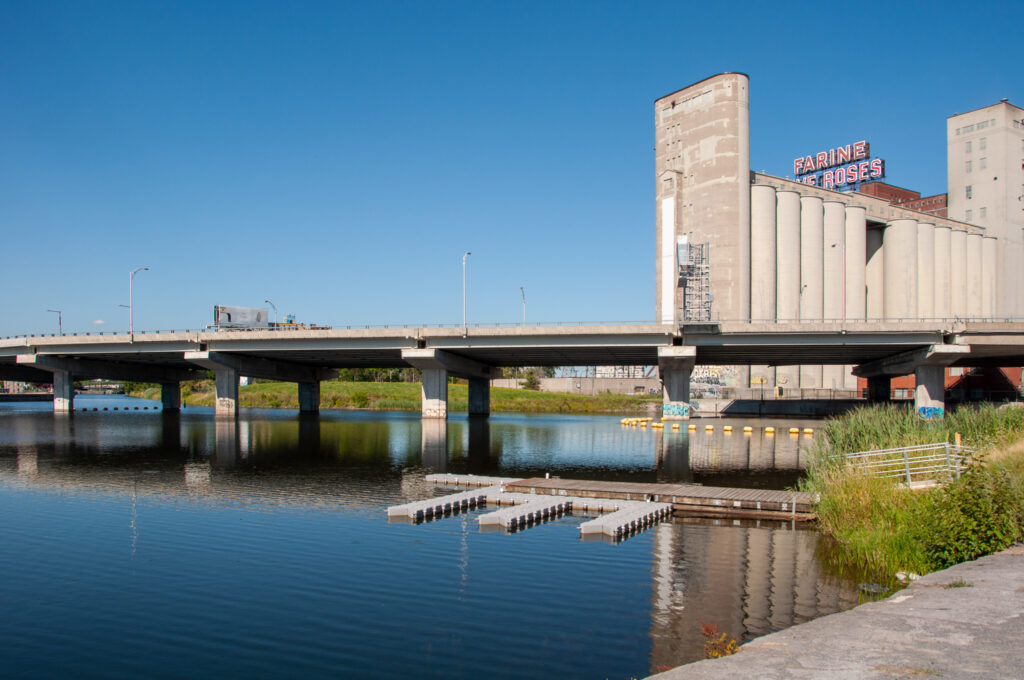
The Lachine Canal is 14.5 kilometers (9 miles) long, and was laboriously constructed in the 1820s. Previous efforts had been made as early as 1689. Why so much work? Because the St. Lawrence river has a set of cataracts — the same ones I wrote about last year. Getting a boat upstream there is difficult at best, and for a large ship, basically impossible.
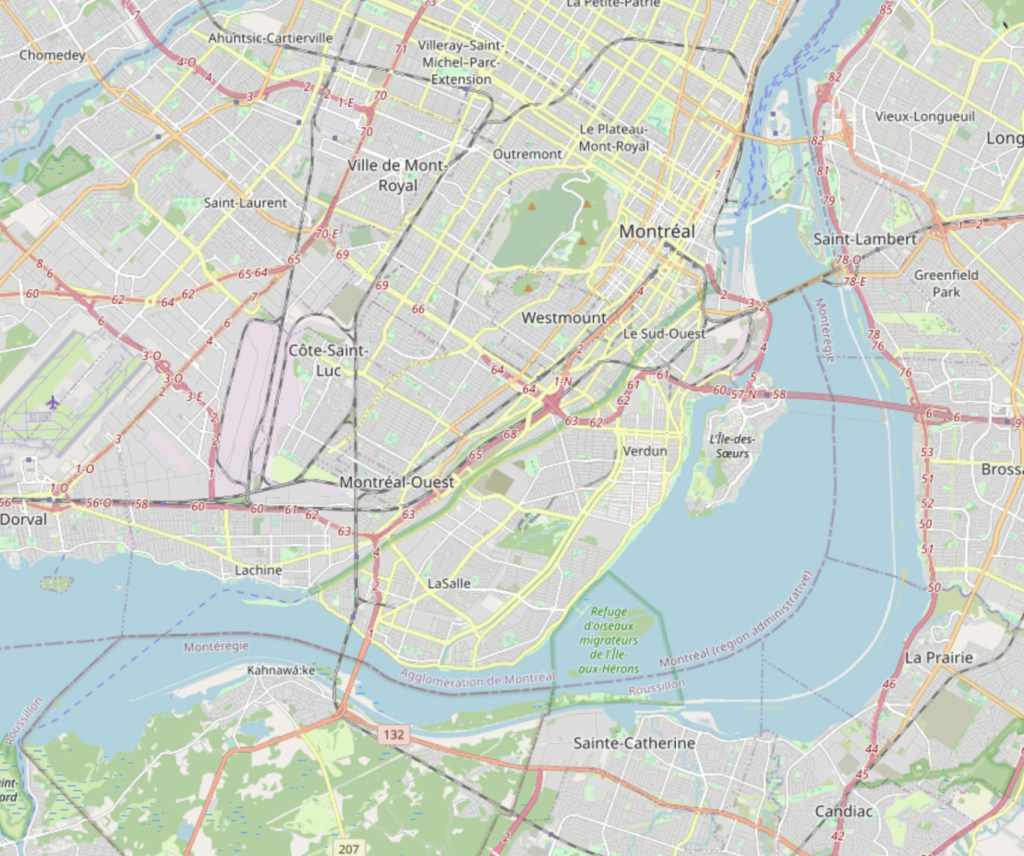
Looking at a map, you might wonder why the canal is routed the way it is. You might think that a much shorter canal could be cut through just that area surrounding the rapids. The reason, however, is topography. Smack in the middle of what is now the canal was once a lake: Petit Lac St. Pierre. Furthermore, the longer canal allowed for putting in more (and thus shallower) locks.
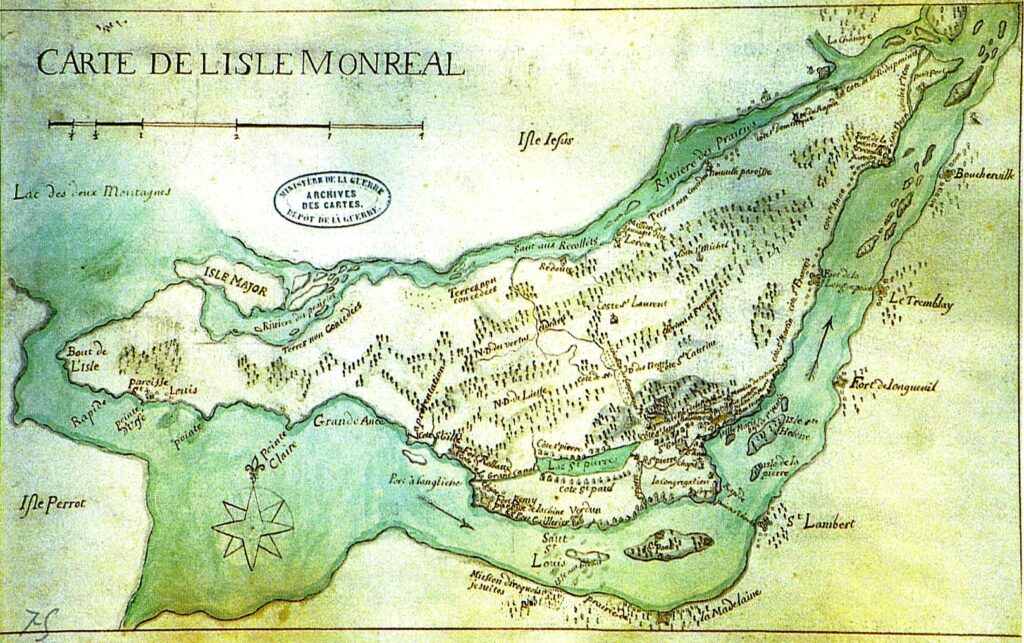
The canal enabled heavy shipping along the St. Lawrence, and increased the importance of the port at Montréal.
Our guide was anxious to tell us, though, that the importance of the canal was far greater than just an improved shipping route. After all, he pointed out, the railroads connected to Montréal a mere ten years or so after the canal was completed. No, the importance of the canal was that it was the original point of industrialization of Canada. The hydro power of the canal was utilized as the Industrial Revolution reached the new world. The canal was lined with over a hundred factories, with the water running mills and turbines.
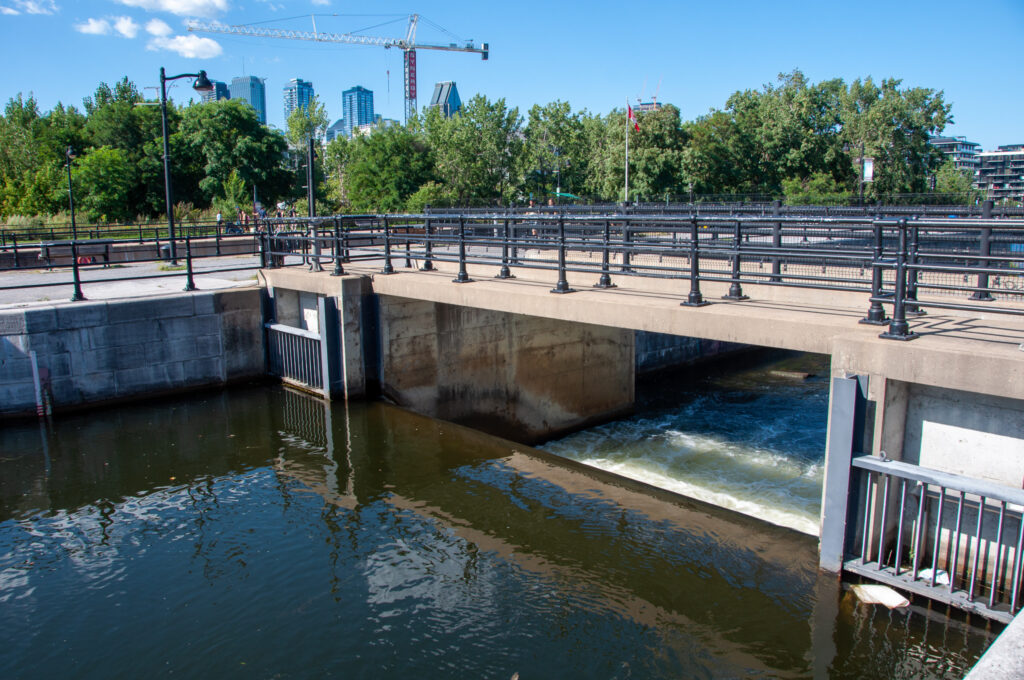
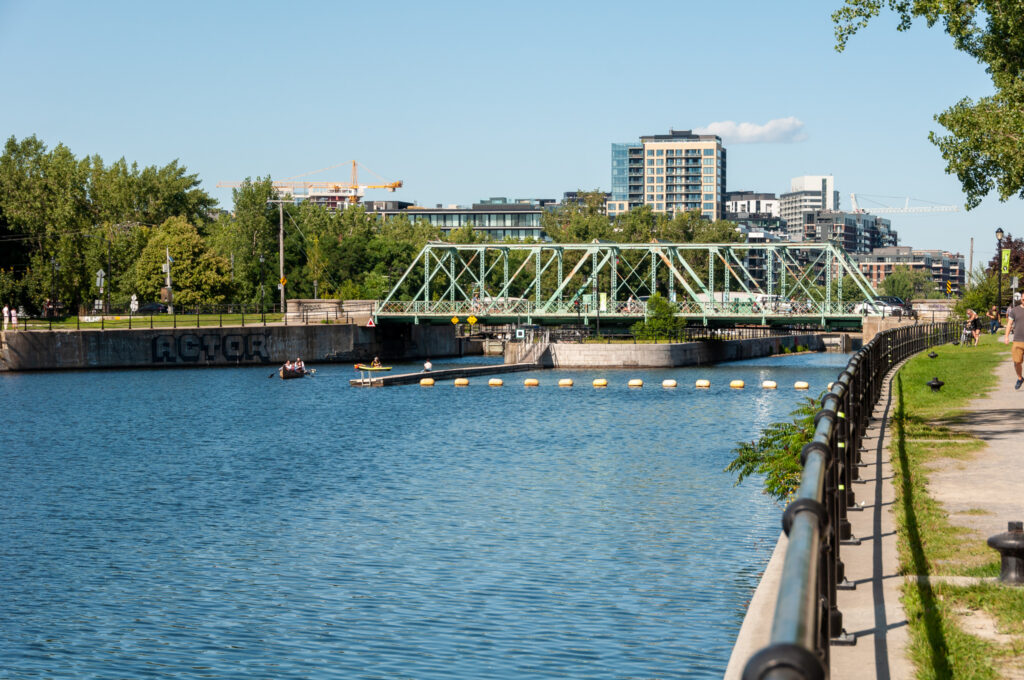
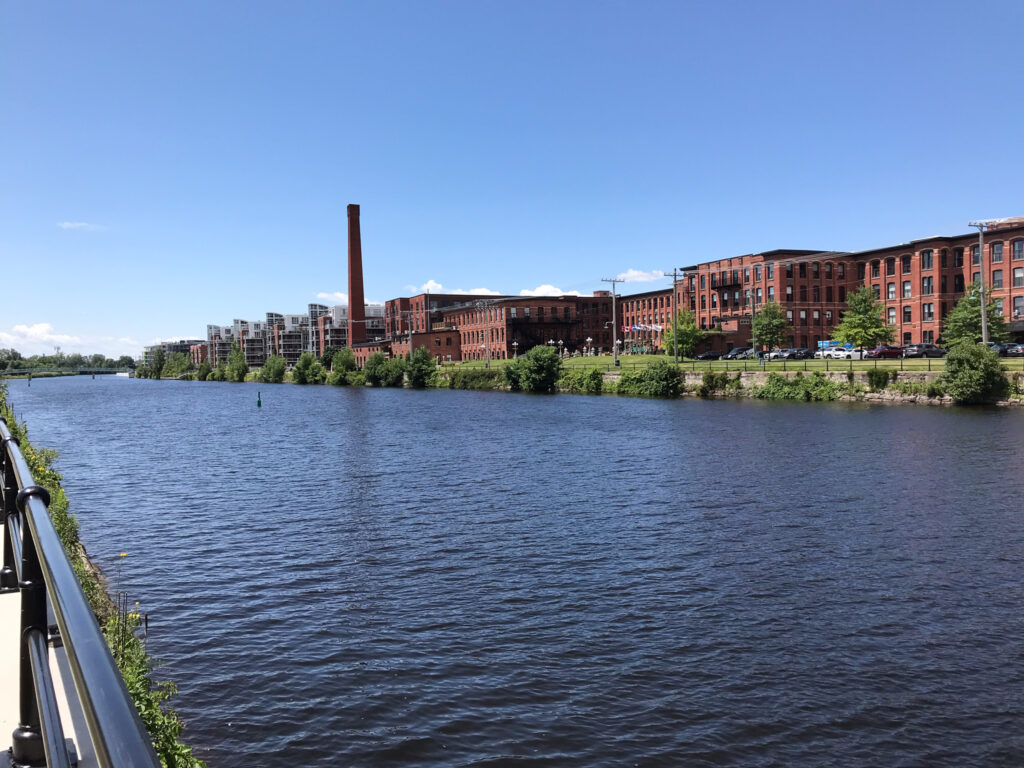
While those factories and mills helped make Canada an industrial leader, they are now gone for the most part. The hydro power plants are also gone from the canal. And with the development of the St. Lawrence Seaway in 1959, shipping left the canal too.
The Lachine Canal was recognized as a National Historic Site in 1985, and over the past decades has been rehabilitated from a moribund industrial ruin into a recreational area and an interesting place to explore. With the rehabilitation has come popularity. Deserted or decrepit factories are now high-priced condos and exclusive shopping.
It’s interesting to see how the cycle of growth, decay, and revitalization takes place in an older city.
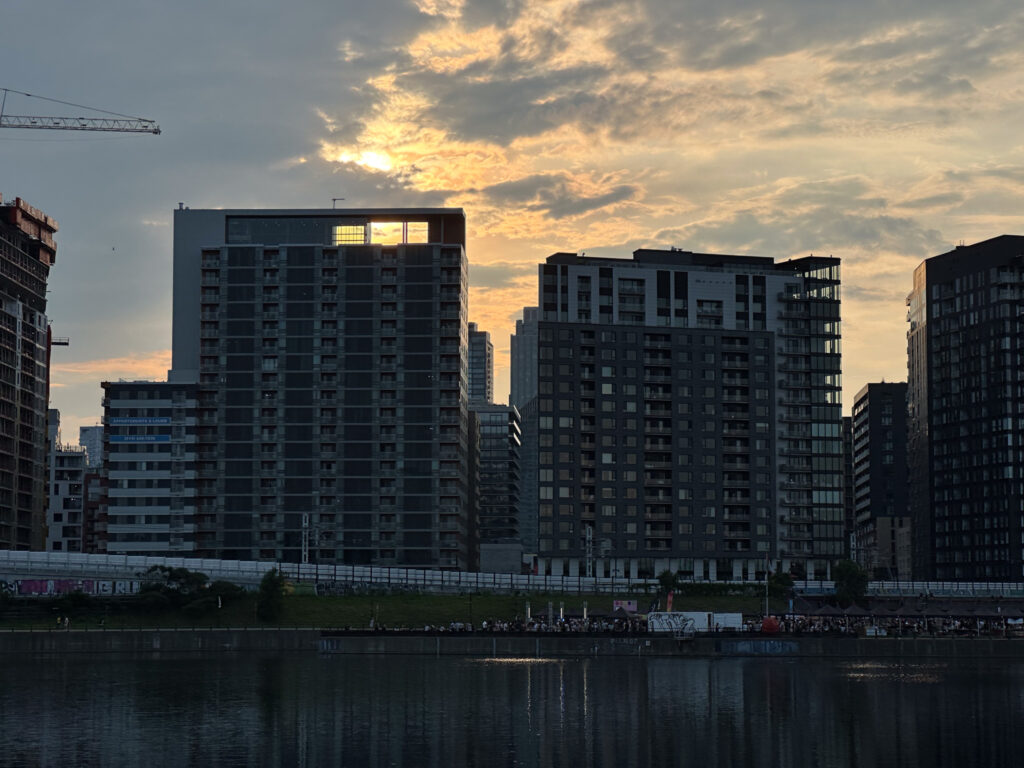

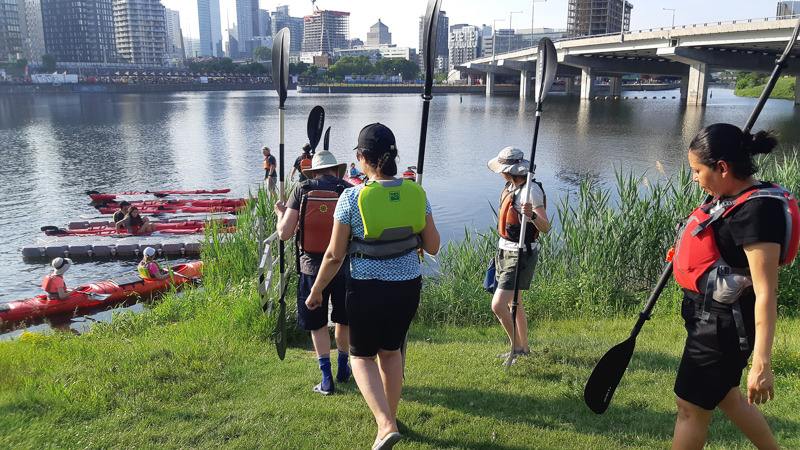
One reply on “Lachine Canal”
Sightseeing the city on kayak sounds nifty!